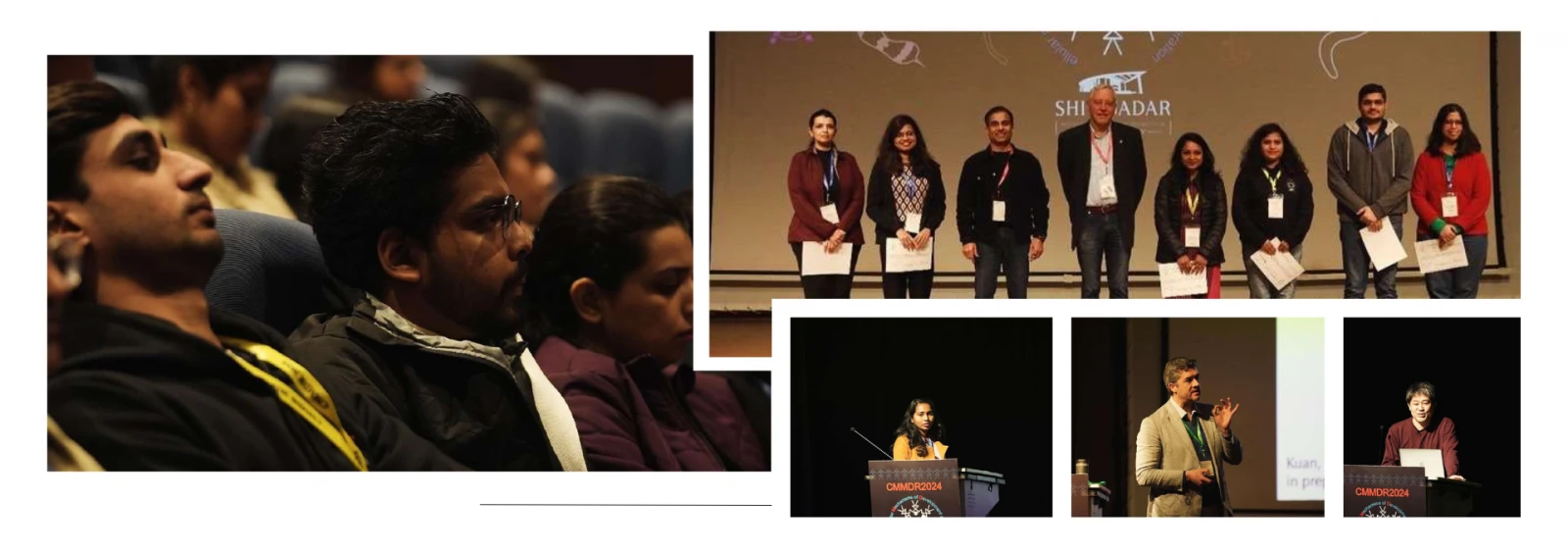Experts discuss new frontiers in cellular and molecular mechanisms of regeneration at 3-day conference
Nearly 60 experts from across the world delivered talks during the 3-day Conference on Cellular and Molecular Mechanisms of Development and Regeneration 2024 at Shiv Nadar University. Hosted by the Department of Life Sciences from February 15 to 17, the conference provided a unique platform where experts from the field of development and regeneration biology using 14 different non-model organisms to seek answers to fundamental questions in biology.
Besides a robust exchange of research findings, the conference facilitated the exchange of ideas and resources among scientists and enabled young researchers to hear and clear doubts from experts.
Delivering the keynote lecture, Kiyokazu Agata, Director General of the National Institute of Basic Biology (NIBB), Japan, and recipient of the Lifetime Achievement Award from the International Society for Regenerative Biology (ISRB), gave a brilliant presentation on how a planarian head can be regenerated from the tailpiece. He said, “Through exploration using regenerative phenomena, it has become clear that the order forming the society of cells allows individual cells to express their uniqueness by creating a positional information system during the evolution of multicellular organisms.”
The non-model organisms discussed during the conference included planaria, zebrafish, molluscs, mosquitoes, amphibians (tadpoles, salamander), Hydra, sea anemone (Nematostela), Paramecium, Ciona, sponge, snail, chickpea, callus, and earthworms.
Dr. Jochen Rink, Director at the Max Planck Institute for Biophysical Chemistry, presenting a paper titled, ‘Why some planarians regenerate, while others won’t,’ said, “It is a great time to be in biology as established model system constraints are dissolving.”
The event saw over 55 research papers being presented to investigate the differences between regenerative and non-regenerative animals using cutting-edge approaches.
Delivering his Plenary Talk, Dr. Thomas Bosch, Chair and Director at Zoological Institute of the Christian-Albrecht University of Kie, speaking about Hydra and the Holobiont Imperative, said that the Hydra nervous system shares a deep evolutionary connection with all animals, including humans. “Organisms are holobionts/metaorganisms, and the microbiome is the third arm of the animal immune system. One has to remember that microbiomes control animals and affect stem cell decision-making and developmental processes,” said Dr. Bosch.
Earlier, inaugurating the event, Dr. Sanjeev Galande, Dean, School of Natural Sciences, Shiv Nadar University, explained how the conference was conceptualized with Dr. Thomas Bosch during one of their brainstorming sessions. “Events like this will go a long way in increasing awareness of this important field and demystifying the subject to students and researchers. This will encourage them to undertake research projects using diverse model systems. We live in a time where students need to explore the un-characterized model systems to understand biology better.”
A poster competition held in parallel saw Shiv Nadar University’s Akanksha Pal win the first prize for her work on ‘SMED-TIP60 acts as a regulator of planaria regeneration.’ She won a cash prize of Rs. 22,000.
A workshop held after the conference included a demonstration of Hydra and planaria culture handling, feeding, cutting, and regeneration assay. The participants, including high school teachers and undergraduate students, were also given sufficient background during multiple talks delivered on both days of the workshop.
Giving his invited talk, Dr. Lionel Christiaen, Professor of Biology Center for Developmental Genetics, New York University, explained the extended Central Dogma for Developmental cell behavior where the transcriptome drives the multipotency of the progenitors, taking the reference of his work on the whole heart regeneration in Ciona.
Dr. Hongkui Deng, Professor at Peking University, Beijing, held the audience in rapt attention during his plenary talk explaining how chemical reprogramming can break the limits of developmental biology. His groundbreaking research demonstrated that chemical reprogramming of cells could generate functional cells for cell therapy in vitro and induce tissue and in vivo organ regeneration.
The conference played an important role in clarifying fundamental molecular mechanisms that govern regeneration and how this will contribute to developing therapeutics to promote regeneration and repair of the human brain, heart, lungs, nervous system, bones and liver.
In conclusion, Dr. Galande said the deliberations at this conference successfully highlighted the importance of studying cellular and molecular mechanisms of development and regeneration. He said that an international conference on this theme could be hosted at Shiv Nadar University once every two years.
